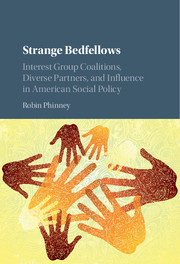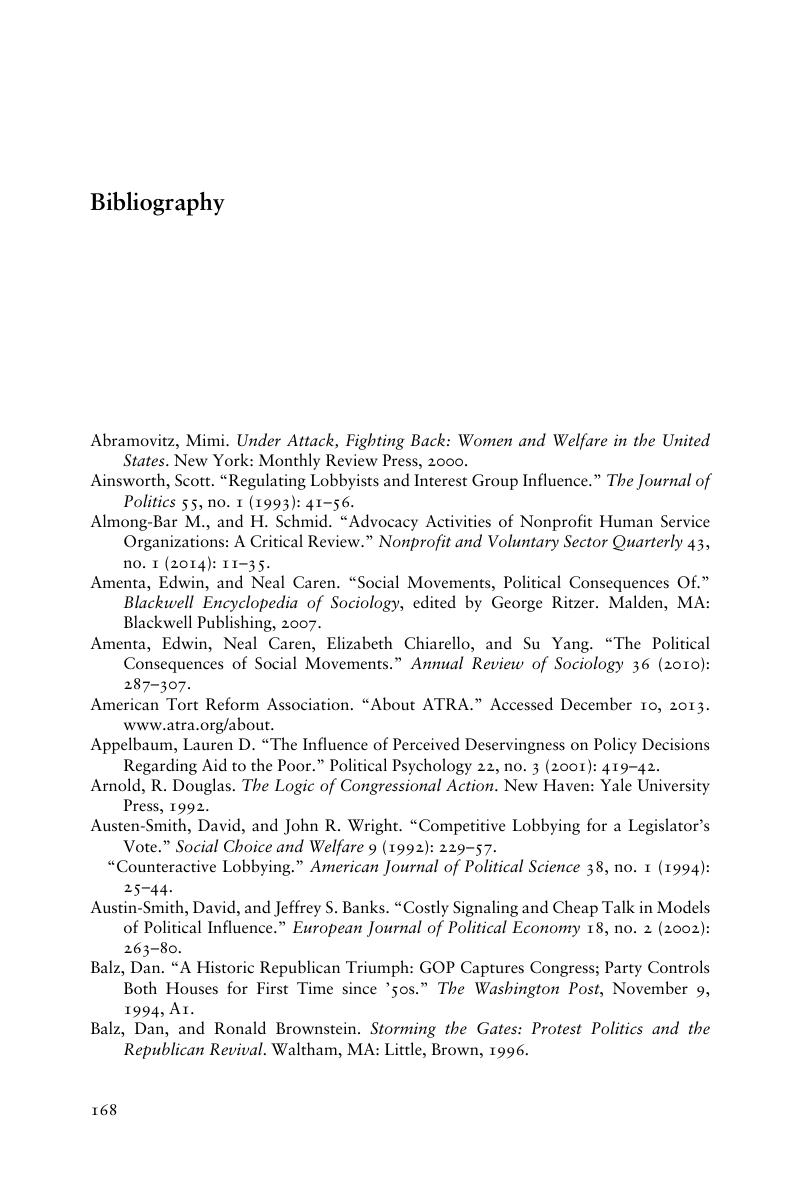 Strange Bedfellows
Strange Bedfellows Book contents
- Strange Bedfellows
- Strange Bedfellows
- Copyright page
- Dedication
- Contents
- Tables
- Figures
- Acknowledgments
- 1 Interest Group Coalitions and Influence in Social Policy
- 2 A Theory of Diverse Coalitions
- 3 An Empirical Investigation of Collaboration in the Policy Process
- 4 Policy Change and Interest Group Involvement on Welfare Issues
- 5 Organizational Advocacy and Collaboration in the 104th Congress
- 6 Collaboration and the Mobilization of Diverse Resources
- 7 Diverse Coalitions and Political Signaling
- 8 The Conditions of Diverse Coalition Formation
- 9 Interest Group Coalitions and American Social Policy: Implications and Extensions
- Appendix List of Congressional Hearings
- Bibliography
- Index
- References
Bibliography
Published online by Cambridge University Press: 05 July 2017
- Strange Bedfellows
- Strange Bedfellows
- Copyright page
- Dedication
- Contents
- Tables
- Figures
- Acknowledgments
- 1 Interest Group Coalitions and Influence in Social Policy
- 2 A Theory of Diverse Coalitions
- 3 An Empirical Investigation of Collaboration in the Policy Process
- 4 Policy Change and Interest Group Involvement on Welfare Issues
- 5 Organizational Advocacy and Collaboration in the 104th Congress
- 6 Collaboration and the Mobilization of Diverse Resources
- 7 Diverse Coalitions and Political Signaling
- 8 The Conditions of Diverse Coalition Formation
- 9 Interest Group Coalitions and American Social Policy: Implications and Extensions
- Appendix List of Congressional Hearings
- Bibliography
- Index
- References
Summary

- Type
- Chapter
- Information
- Strange BedfellowsInterest Group Coalitions, Diverse Partners, and Influence in American Social Policy, pp. 168 - 180Publisher: Cambridge University PressPrint publication year: 2017


